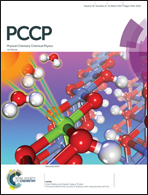Limestone calcination under calcium-looping conditions for CO2 capture and thermochemical energy storage in the presence of H2O: an in situ XRD analysis
Abstract
This work reports an in situ XRD analysis of whether the calcination/carbonation behavior of natural limestone (CaCO3) is affected by the addition of H2O to the calciner at a very low concentration under relevant Calcium-Looping (CaL) conditions for CO2 capture in coal fired power plants (CFPP) and Thermochemical Energy Storage (TCES) in Concentrated Solar Power plants (CSP). Previous studies have demonstrated that the presence of steam in the calciner at a high concentration yields a significant increase in the reaction rate. However, a further undesired consequence is the serious deterioration of the CaO mechanical strength, which would lead to particle attrition and mass loss in any CaL process based on the use of circulating fluidized beds. The results presented in this manuscript on the time evolution of the wt% and crystallite size of the phases involved in the calcination/carbonation reactions indicate that the calcination rate is still notably increased by the presence of H2O at very low concentrations whereas the reactivity toward carbonation and crystal structure of the formed CaO are not essentially affected, which suggests that the CaO mechanical strength is not impaired. Thus, the benefit of using steam for calcination in the CaL process could be still retained while at the same time particle attrition would not be promoted.



 Please wait while we load your content...
Please wait while we load your content...